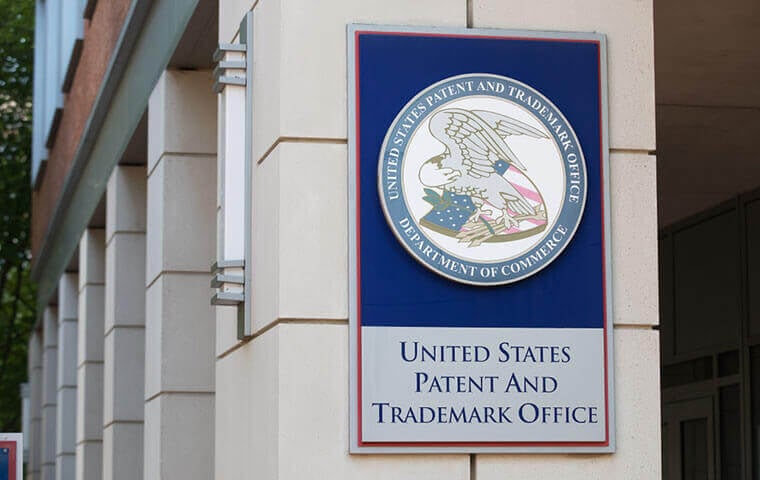 In 2024, the USPTO received about 527,000 new patent applications and its cadre of some 8,900 examiners granted about 365,000 of them. Image: Mark Van Scyoc/Shutterstock.com
By: FEDweek Staff
In 2024, the USPTO received about 527,000 new patent applications and its cadre of some 8,900 examiners granted about 365,000 of them. Image: Mark Van Scyoc/Shutterstock.com
By: FEDweek StaffTime pressures and the need for additional training are main concerns of patent examiners, who told the GAO that the U.S. Patent and Trademark Office “prioritizes examination output (i.e., the number of patent applications reviewed) over the quality of the review.”
In focus groups, 50 examiners with differing specialties “said that the USPTO focuses more on the volume of work completed, which can affect the thoroughness of examinations,” a report said. Their top concerns included not having enough time to review applications, difficulty in getting additional time when needed, and that they sometimes have to “use unpaid personal time to meet output expectations.”
Examiners also said they “want trainings that are more targeted to their specific technology areas” and that they sometimes are assigned applications outside their area of expertise due to issues with the routing system.
Since a 2016 report raising similar concerns, the examination process has become increasingly complex as technology has advanced and new legal requirements have been added, the GAO said.
The report said that in 2024, the USPTO received about 527,000 new patent applications and its cadre of some 8,900 examiners granted about 365,000 applications. GAO found that only 84 percent of granted patents met all four basic requirements for approval, and cited a study showing that about 40 percent of patents that are challenged in court by competitors are found to be invalid, “although these patents might not be representative of all patents.”
The USPTO “has undertaken several initiatives to address examination challenges and improve patent quality, but it has generally not effectively planned or assessed these initiatives. In addition, the USPTO uses pilot programs to develop and test changes to the examination process. However, the USPTO’s implementation of pilot programs is inconsistent, and the agency is missing opportunities to inform future pilots,” it said.
The agency concurred with recommendations to evaluate ongoing initiatives related to patent examination challenges, formalize its approach for managing pilot programs, establish and communicate an overall patent quality compliance goal, and more.
Large Share of Federal Workforce about to Experience a Payless Pay Period
OPM Details Coverage Changes, Plan Dropouts for FEHB/PSHB in 2026
OMB Says Federal Workforce RIFs are Starting as Shutdown Drags On
Financial Impact of Shutdown Starts to Hit Home; WH Threatens No Back Pay
Surge of Retirement Applications Is in the Pipeline, Says OPM
See also,
TSP Takes Step toward Upcoming In-Plan Roth Conversions
5 Steps to Protect Your Federal Job During the Shutdown
Over 30K TSP Accounts Have Crossed the Million Mark in 2025
The Best Ages for Federal Employees to Retire

